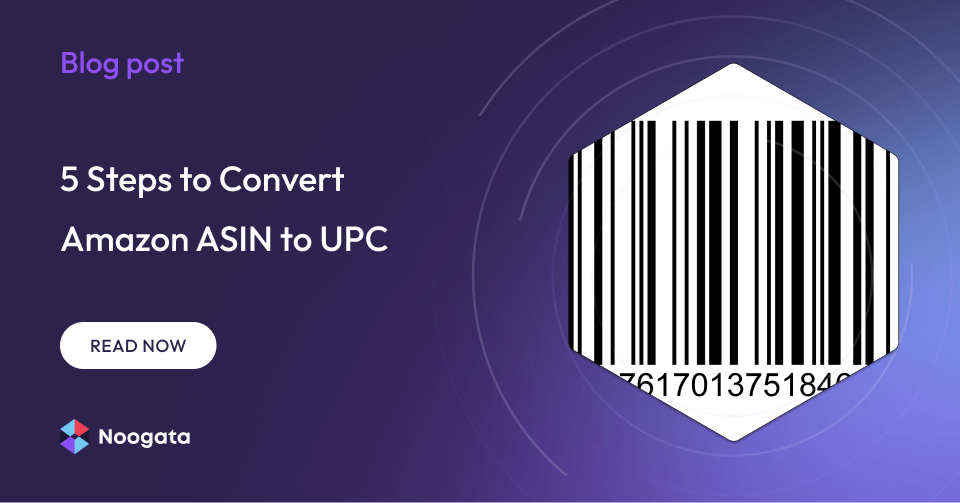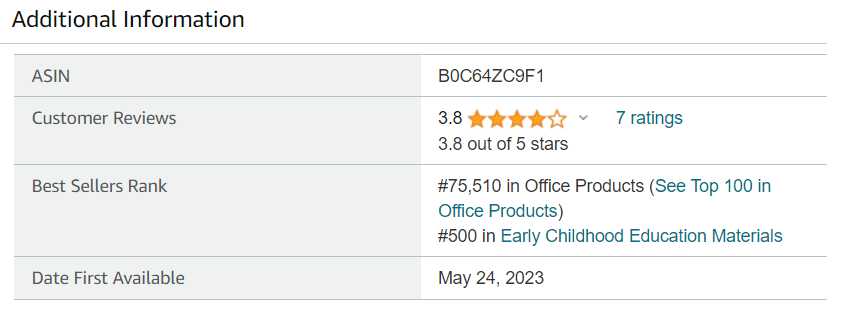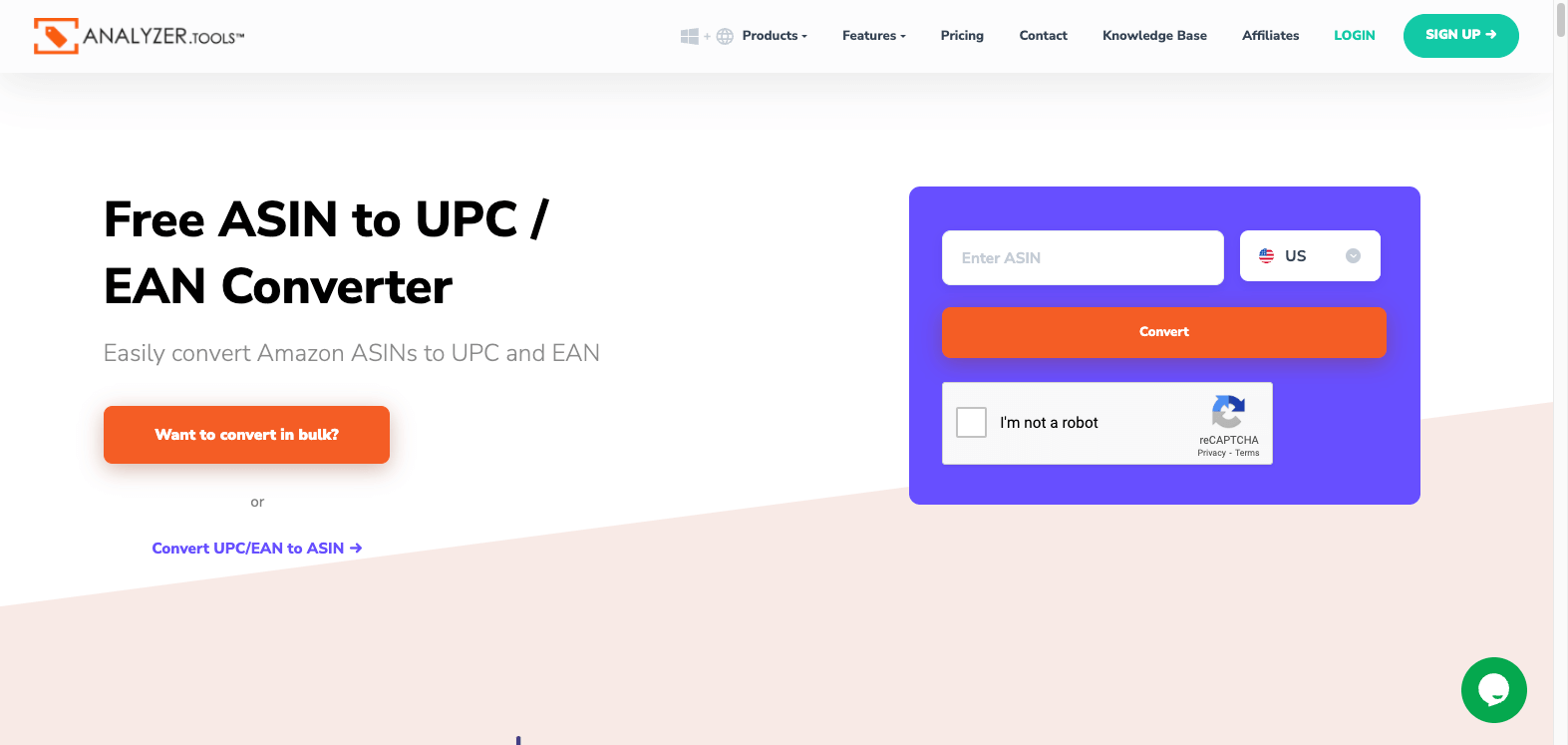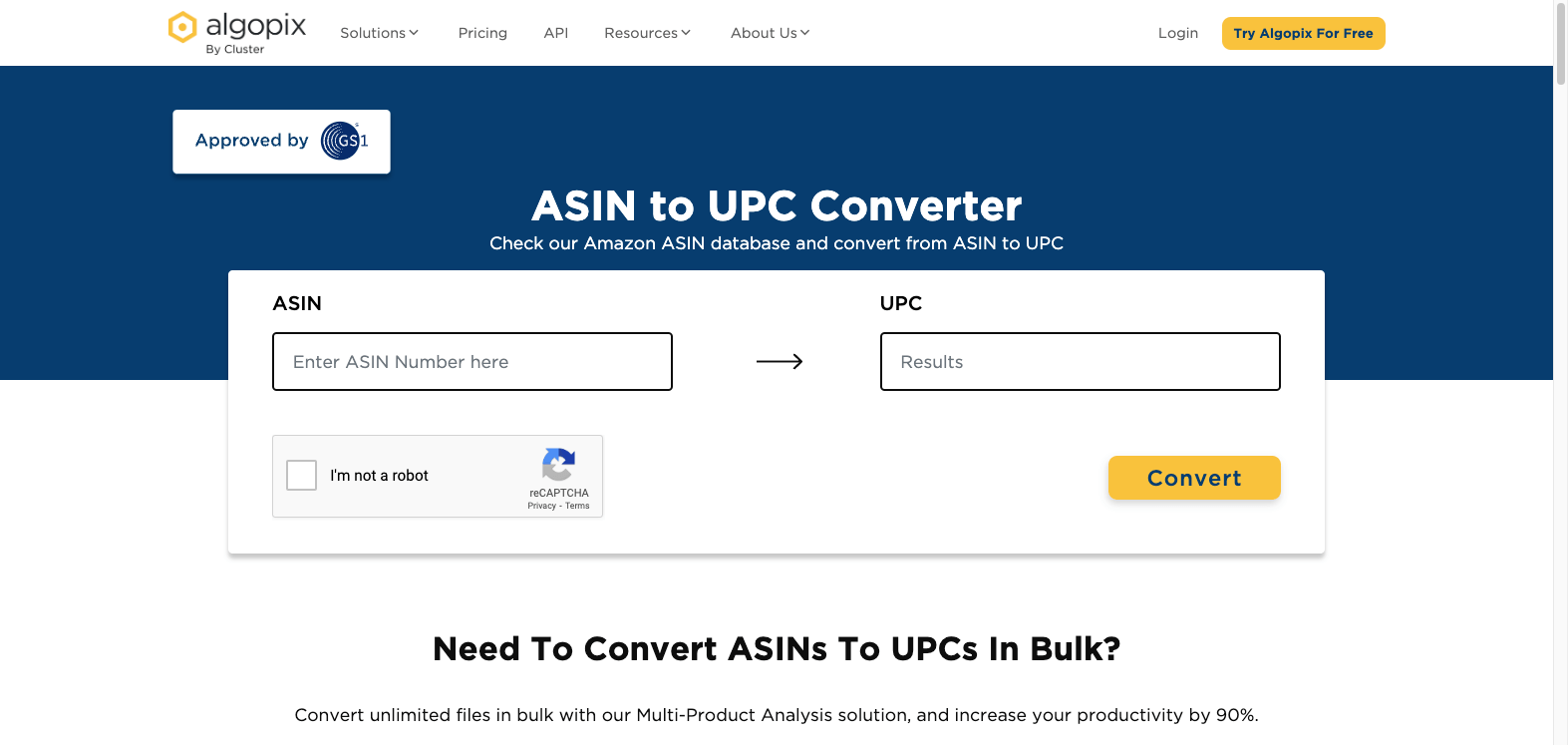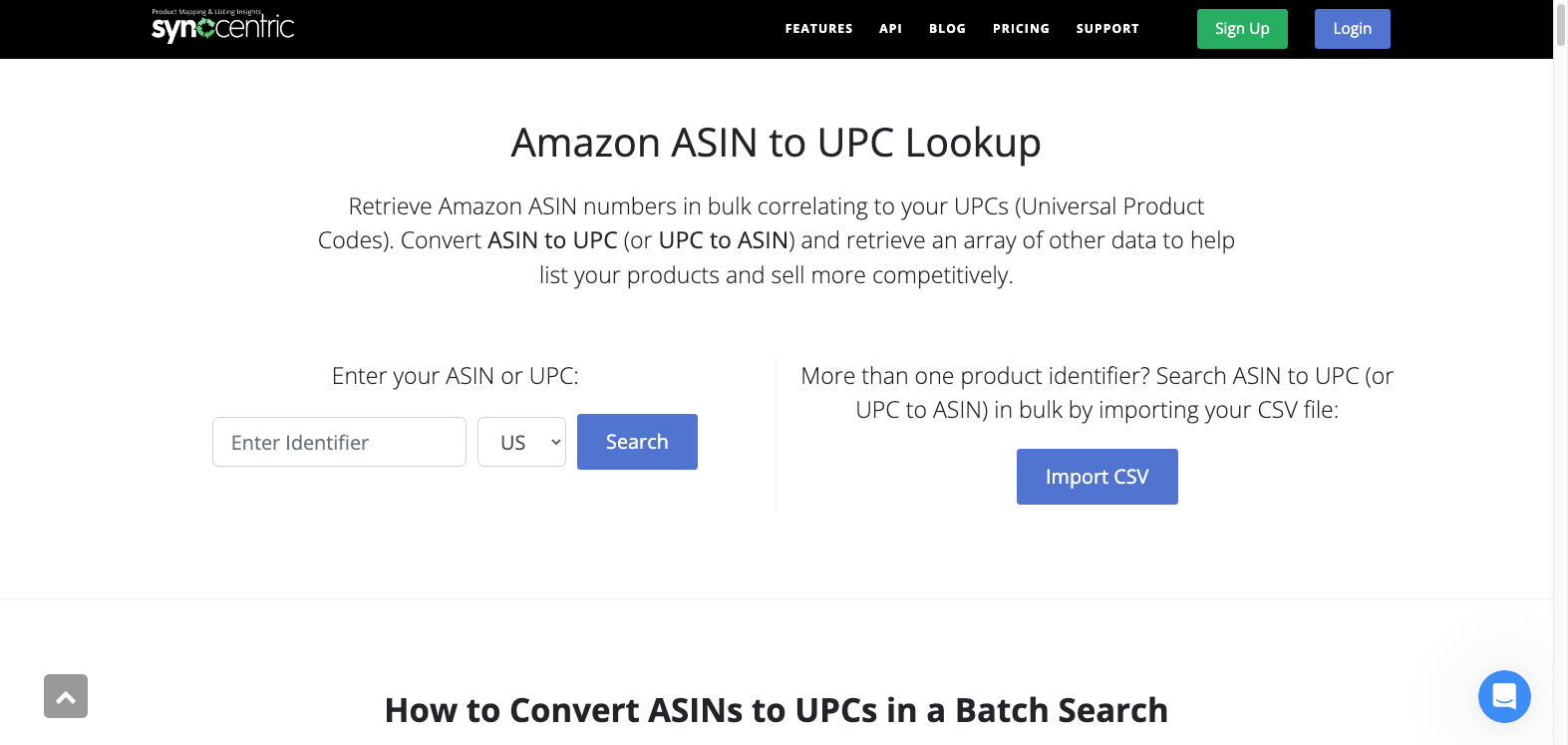If you’re like many Amazon sellers, growth is a significant goal. However, with ongoing supply chain challenges and intense marketplace competition, you realize that catalog management is becoming more challenging. Can you even be profitable while expanding both on and off Amazon in this environment?
The answer to that question is a resounding “Yes!” Brand owners’ sales grew more than 20% in 2022 compared to the previous year—and various reports indicate that approximately half of all sellers have sold on another channel or will be soon.
While there are many strategies to consider when managing your products across different marketplaces, sometimes the little things can get you stuck—like converting a large number of ASINs to UPCs. While this could be challenging in the past, Amazon and 3rd party software vendors have simplified this process. Here’s how to do it.
What is an Amazon ASIN?
An ASIN, or Amazon Standard Identification Number, is a 10-character alphanumeric unique identifier assigned by Amazon.com and its partners for product identification within the Amazon organization. Each product sold on Amazon.com is given a unique ASIN. For books, the ASIN is the same as the book’s ISBN number. A new ASIN is created for all other products when the product is uploaded to a seller’s catalog.
The importance of the ASIN lies in its ability to provide a reliable means of cataloging and keeping track of inventory. It simplifies the process of searching and comparing products. When customers search for a product on Amazon, the ASIN matches the customer’s query with products in the catalog.
For sellers, having a unique ASIN is essential because it allows them to list their products on Amazon’s platform and enables customers to find and purchase their items more easily. It also helps Amazon prevent duplicate product listings, manage its vast product database efficiently, and provide accurate product recommendations to customers.
What’s a UPC?
A UPC, or Universal Product Code, is a 12-digit bar code used extensively in the United States for retail packaging. Each UPC is unique to a particular item and manufacturer, and it includes both a number and a barcode that scanners can read. The UPC system is managed by the GS1 organization, which ensures that each code is unique worldwide.
The UPC plays a crucial role for Amazon sellers in several ways. It acts as a standardized method for identifying their products, with Amazon requiring a UPC for most product listings to ensure that each product can be distinctly identified. This requirement extends to listing new products on the platform; unless the products are books or media with an ISBN or are already listed with a UPC, a new listing would necessitate a unique UPC.
In inventory management, UPCs are indispensable as they assist sellers in tracking inventory levels and sales. This tracking makes managing stock on Amazon’s vast marketplace much more manageable. Moreover, the use of UPCs enhances efficiency and minimizes errors. By scanning UPCs to list products or process sales, sellers can avoid mistakes often accompanying manual data entry.
Additionally, UPCs are essential for integrating inventory management and sales tracking across all channels, not just Amazon, for sellers operating across multiple marketplaces. This integration is vital for maintaining consistency and accuracy in the seller’s business operations.
Amazon enforces strict rules regarding UPCs to avoid duplicate product listings and maintain the integrity of its product database, emphasizing the importance of UPCs in the e-commerce ecosystem. In some cases, sellers might be exempt from the requirement to provide a UPC, but they would need to apply for a GTIN exemption from Amazon for their products.
Why are product identifiers vital on Amazon?
Amazon’s extensive product database is designed with precision, utilizing an array of product identifiers, including:
- ASINs (Amazon Standard Identification Numbers)
- UPCs (Universal Product Codes)
- EANs (European Article Numbers)
- GTINs (Global Trade Item Numbers)
- ISBNs (International Standard Book Numbers)
Each of these identifiers plays a critical role in shaping the framework of Amazon’s catalog, ensuring that every product is cataloged in a unique and consistent manner. This cataloging system provides straightforward searchability and efficient management.
The significance of these product identifiers is multifaceted. Amazon relies on them to index products, facilitating a robust and searchable online marketplace. These identifiers also serve as a checkpoint to guarantee that product listings are free from duplicates, thus maintaining the integrity of the catalog.
For customers, these unique codes are the key to locating specific products quickly.
From a seller’s perspective, identifiers are indispensable for tracking inventory and analyzing sales data, which is crucial for stock management and forecasting. Additionally, these codes are integral in crafting targeted advertising campaigns, enabling sellers to reach the right audience based on precise product matches.
Why would you convert ASIN to UPC?
Converting an ASIN (Amazon Standard Identification Number) to a UPC (Universal Product Code) can be a strategic move for Amazon sellers, especially those involved in retail arbitrage or looking to expand their sales channels. Retail arbitrage sellers source products from various retailers that might be discounted, then sell them on Amazon at a higher price. For these sellers, having both the ASIN and UPC is essential for several reasons.
While an ASIN is provided when you list a new product on Amazon, the UPC may be required to access comprehensive sales performance data. This data is critical for arbitrage sellers to understand market trends, determine which products are profitable, and make informed decisions about what to source and sell.
Sellers who begin their business on Amazon often look to diversify their sales channels by listing their products on other platforms such as Walmart, Target, eBay, or their own direct-to-consumer websites. While the ASIN is exclusive to Amazon’s ecosystem, the UPC is a universal identifier recognized globally across various retail platforms and physical stores. Your product’s UPC allows you to broaden your market reach and tap into a larger customer base.
Additionally, ASINs are primarily used for online product searches, whereas UPCs are the standard for product identification in online and physical warehouse settings. Sellers who manage their own inventory or use multiple fulfillment services will find that converting ASINs to UPCs simplifies operational processes. This is because warehouses and fulfillment centers typically scan UPCs to track inventory.
Aligning your inventory system with UPCs can streamline operations, reduce errors, and ultimately enable you to scale your business in terms of service quality and sales volume.
4 Steps to Convert an Amazon ASIN to UPC on Amazon
The means to easily convert an ASIN to UPC can be found with Amazon Seller Central. Here are the four steps:
- Log into your Amazon Seller Central account.
- Add a product to your inventory.
- Search for your ASIN.
- When you get the result, it will also include your UPC code.
However, while this method is effective and relatively simple, it doesn’t help much when you are attempting to efficiently convert an entire catalog. That’s when you need the 5th step: software converter tools.
The 5th Step: Using ASIN to UPC Converter Tools
ASIN to UPC Converter Tools allow you to do your ASIN to UPC conversion in bulk, up to 100,000 identifiers at a time. This simplifies moving an entire catalog to eBay, for example.
Here’s how the tools generally work for bulk conversions:
- Export a list of ASINs from your Amazon Seller Central account as a .CSV file.
- When you use ASIN to UPC converters, upload the file, then choose which columns in the file to submit.
- In return, you’ll get a list of UPCs, including product and pricing information.
Here are three recommendations for tools that let you convert ASINs to UPCs individually or in bulk.
3 Tools to Convert Amazon ASIN to UPC
1. Analyzer.Tools
Analyzer.Tools have offered wholesale bulk analysis software to help Amazon sellers scale since 2016. It provides a free version for individual ASIN to UPC conversions or a paid one for unlimited bulk conversions and product insights straight from Amazon’s API.
2. Algopix
Algopix helps Amazon, eBay, and Walmart sellers conduct profitable market and product research. It offers a free ASIN to UPC converter, which includes limited bulk conversions.
3. Synccentric
Synccentric offers a range of ASIN to UPC lookups, from a single free one to 100,000 product searches in its highest-tier paid program. The free version provides unlimited searches and conversions for up to 20 products.
Other converter tools are easily located online. Before using any online ASIN to UPC converter, ensure the tool is reliable, meets your needs for conversion volume, and is within your budget.
Optimizing Amazon ASINs for Growth with Noogata
Amazon sellers looking to convert ASINs to UPCs are working to grow, and to do that, it’s essential to diversify your revenue sources through other marketplaces. But, there are still plenty of growth opportunities on Amazon itself.
Noogata’s eCommerce growth solution offers pricing, content, and advertising optimization at scale across all your ASINs with its AI Amazon Assistant. Deep analytics and robust competitive intelligence features will help your ASINs outperform the competition, on and off the marketplace.
Book a free demo today to learn what’s possible with Noogata.
